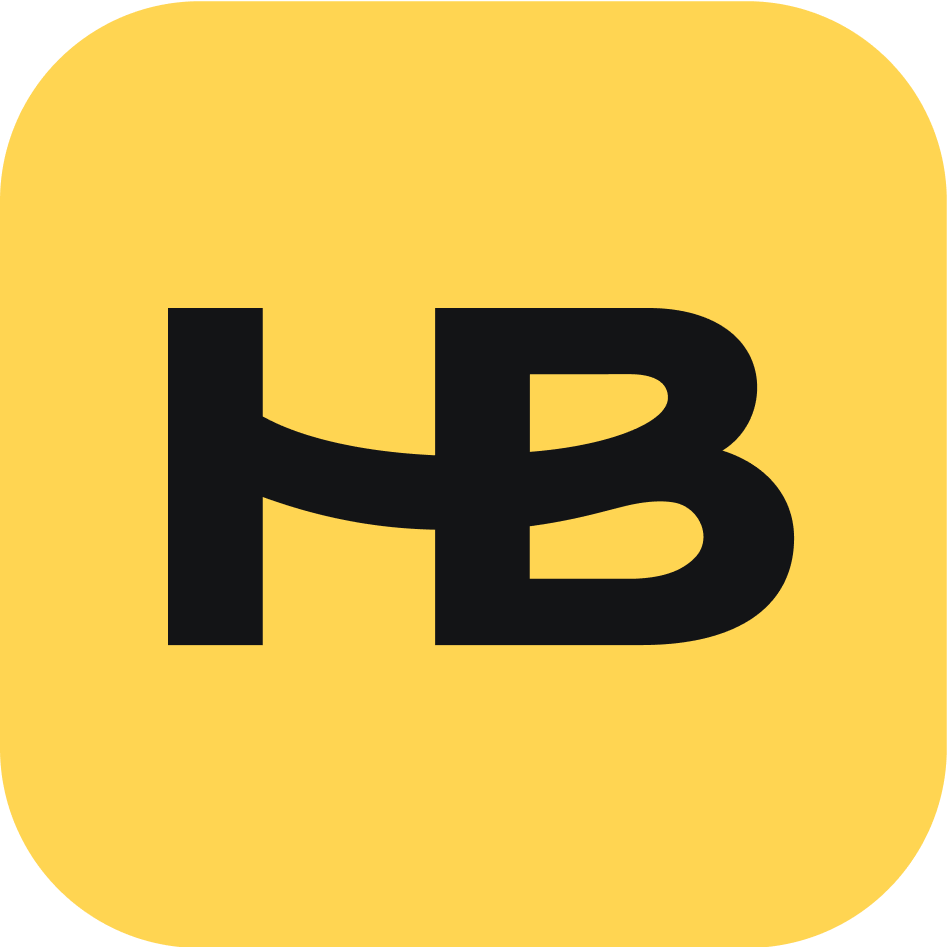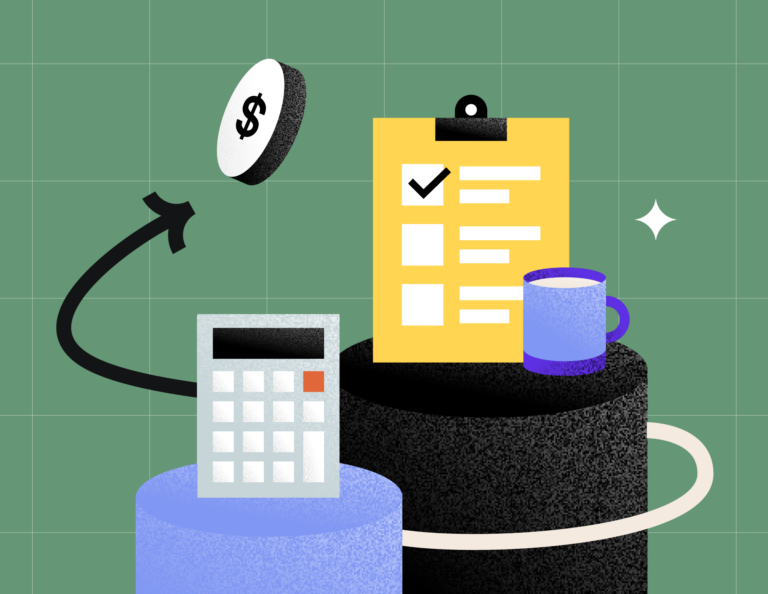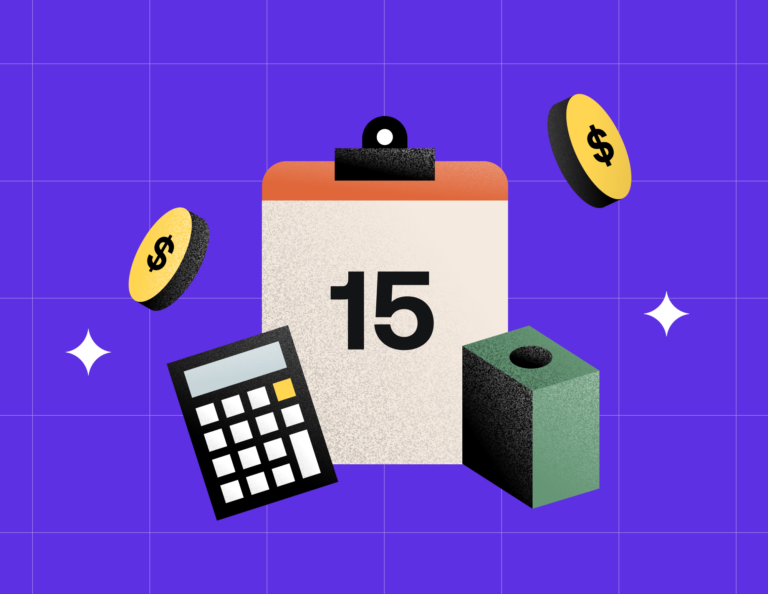Improve your small business financial literacy with these 19 definitions! Whether you do your own bookkeeping or employ an accountant, knowing these terms can keep you better organized and focused on your financial health.

You don’t have to be a bookkeeper or accountant to be financially literate in your business! In fact, most entrepreneurs should focus on small business financial literacy whether or not they have a strong involvement in their finances.
It is also never too late to become more financially literate, even if you’re just starting your business or you’ve been operating for years. To help, we’ve put together 19 financial terms to know. Bookmark this page to keep the terms on hand and refer to them as you conduct your bookkeeping or analyze financial reports.
Why is financial literacy important in business?
Even if you have an accountant to handle most of your financial needs, it’s still important to be financially literate as a business owner. By understanding the basics, you can have more productive conversations with your financial advisors. You’ll also be able to make more well-informed decisions based on your financial reports.
Financial literacy is also important for filing your taxes. Beyond knowing what forms and numbers to collect, actually understanding what they mean will help you better prepare. You can count on fewer surprises and frustration as you file your taxes and get your return or see what you owe.
Overall, business financial literacy empowers you to make better decisions for your business.
19 financial terms and definitions for business owners
Below, we’ve defined 19 financial terms that business owners should know. Keep in mind that this is not an exhaustive list of small business terms, and you should always consult a professional accountant if you don’t understand what something means and the financial implications on your business.
Bookkeeping
Bookkeeping is simply the process of recording your finances. It includes recording your assets, liability, and equity.
Assets
Your assets include anything you own that has cash or other value for your business. Assets include cash, inventory, investments, property, intellectual property, and more. In simple terms, your assets equal your liabilities plus your equities.

Assets = Liabilities + Equities
Equities
If you paid off all your debt, your equity is the money you would have left, which is good to track so you can understand the overall value of your business.

Equity = Assets – Liabilities
Liabilities
Your business liabilities include anything you owe, so any debts. These might include accounts payable, credit, loans, salaries, rent payments, and more.
Accounting
Accounting is the analysis of your financial records to understand your business health, growth, and areas where you may need to pivot. Your analysis should include looking at your assets, equities, liabilities, revenue, expenses, and more. Within the process of accounting, you produce three main financial statements: income statement, cash flow statement, and balance sheet.
Income
Income is the broadest term you can use when it comes to the money you make. It refers to any money you receive from work or investments.
Revenue
Your revenue is the income generated from your primary business activities. For some independent business owners, your revenue and income will be the same amount of money if you only generate income from your primary business activities.
Profit
Your profit is also called your bottom line. It’s all the money in your business that you’ve made after accounting for all your expenses and debts.

Profit = Revenue – Expenses
Cost of goods sold
The cost of goods sold is a category of expenses that all business owners have. It’s the total cost directly attributed to offering your products or services, but does not include more general expenses for your business. For instance, your time and labor goes into your cost of goods sold, but your office rent does not. For a photographer, your cost of goods would include your camera equipment, paper and printing costs, and shipping costs to send albums and prints.
Expenses
Your expenses are any costs related to running your business. Tracking expenses is essential to understanding your net profit and to properly file your taxes. For most independent business owners, expenses will likely fall under these categories:
- Cost of Goods Sold – Total cost of offering your products or services
- Marketing & Advertising – Costs of your website domain and maintenance, social media ads, and fees for any conferences you attend
- Dues & Subscriptions – Fees for professional organizations you belong to or subscriptions for software like HoneyBook
- Salaries & Wages – Salaries and wages for both contractors and employees, including the salary you pay yourself
Profit and loss
Your profit and loss refer to whether you made a profit or lost money overall over a period of time. For small business owners, we recommend reviewing your profit and loss each month to determine whether you’re spending more money than you’re bringing in. A profit and loss statement considers your income, revenue, and expenses to come up with your profit margin.
Cash flow
Your cash flow is the status of your cash inflows and outflows at any period of time. Different from profit and loss, your cash flow can vary daily depending on expenses, invoices due, income, and more. Understanding cash flow is important to know whether you’re spending beyond your means at any point in time. It can also help you notice patterns in your seasonal highs and lows.
Accounts receivable
Your accounts receivable includes all the money that’s owed to you. For an independent business, your accounts receivable will mainly include outstanding invoices.
Accounts payable
Opposite from accounts receivable, accounts payable includes all the money that you owe to someone else, such as vendor payments, software licenses, leases, and more.
Balance sheet
A balance sheet is what accountants use to keep track of assets, liabilities, and equity at any period of time. As a snapshot of your business, it can help you track your overall growth over time. Ideally, your liabilities shouldn’t outweigh your assets and equities, or you may be borrowing and spending too much money for your business.
Single-entry bookkeeping
Single-entry bookkeeping is the most straightforward method of bookkeeping, and likely the one that you use for your small business. Just like you would record all transactions in a cash register or checkbook, single-entry bookkeeping just means you’re recording every business transaction once.
Double-entry bookkeeping
Double-entry bookkeeping requires two entries for every business transaction, which is valuable for maintaining more focus on your liabilities or debts. With double-entry bookkeeping, each transaction would be recorded twice as a debit and a credit. For example, a $5,000 loan would be marked as a credit of $5,000 for your business, but a debit of $5,000 toward your liabilities.
General ledger
Your general ledger is the main record for all your bookkeeping. While in the past, general ledgers were written notebooks, you can now easily keep your general ledger in accounting software like Quickbooks Online, which integrates directly with your HoneyBook account.
Chart of accounts
Your chart of accounts is what organizes your general ledger. Typically, your general ledger is separated into five accounts: assets, liabilities, equities, expenses, and revenue. With this method, it keeps all of your transactions organized to help generate financial statements easily and prepare for your taxes.
Everything you need for small business financial literacy
Once you know and understand the terms above, you’re well on your way to financial literacy. To bring it all together for your business, be sure you’re investing in a CRM for small business as well as an accounting software. With HoneyBook, you can send online invoices and accept online payments seamlessly to track all of your revenue in one place.
You can also track expenses and understand your profit and loss each month. With simple Quickbooks integration as well, you can manage all your bookkeeping and accounting needs in one place.
Get help understanding and improving your numbers!
Work with a HoneyBook Pro Accountant or Bookkeeper to properly manage your finances and understand where you can be maximizing your profit.
Browse the Pros


